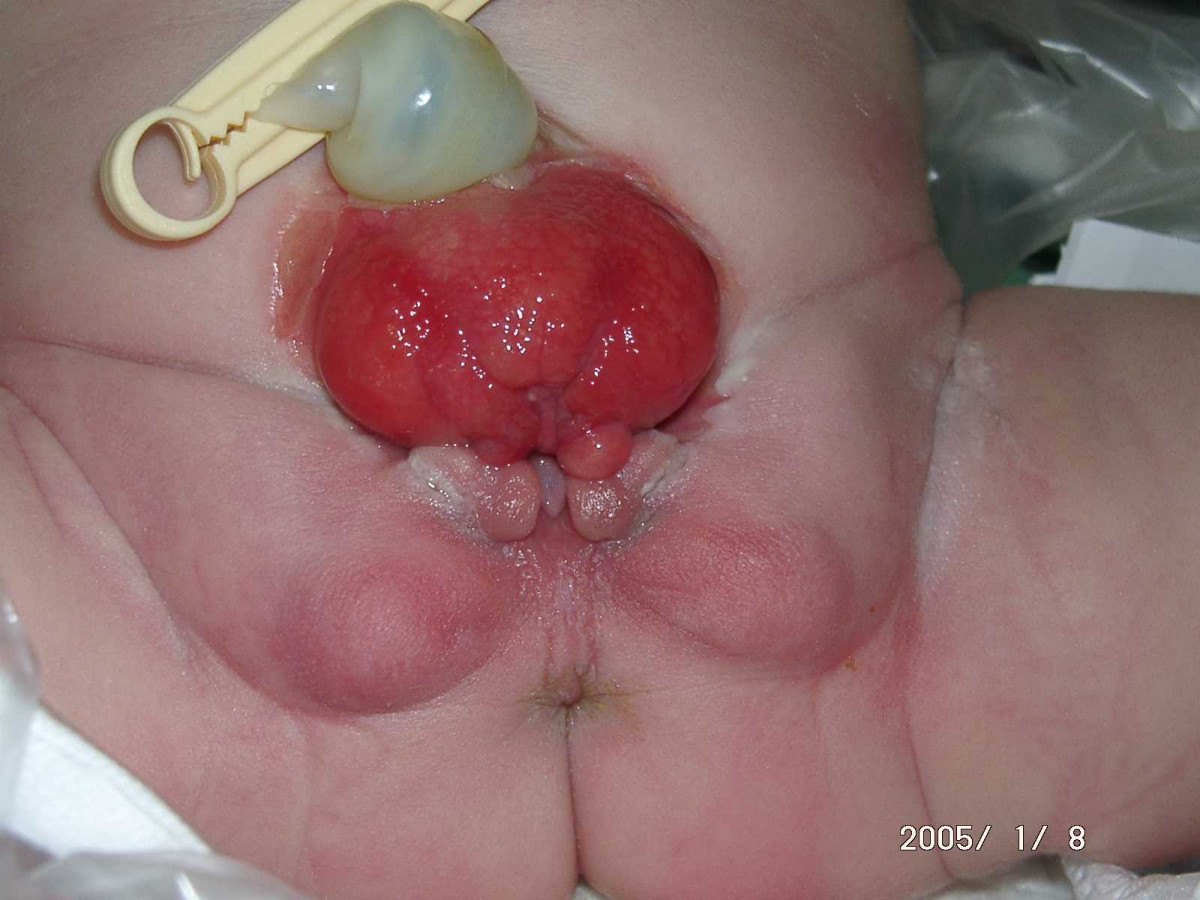What are the symptoms of bladder exstrophy?
Bladder exstrophy is a rare congenital condition where the bladder is exposed and located outside the abdomen. The symptoms can vary, but typically include:
- Visible bladder: The most noticeable symptom is a protruding, pinkish-red bladder located outside the body, usually between the abdomen and the legs.
- Abnormal pelvis: The pelvis may be wider than normal and the pubic bones may be separated more widely than usual.
- Malformed genitals: In males, the penis may be short and curved, and the testicles may not be descended. In females, the clitoris may be split, and the labia may be separated.
- Urinary incontinence: The exposed bladder can lead to urinary leakage or incontinence.
- Urinary tract infections (UTIs): Due to the abnormal positioning of the bladder, UTIs are more common.
- Difficulty controlling urination: Children with bladder exstrophy may have difficulty controlling when and where they urinate.
- Possible associated conditions: Some individuals with bladder exstrophy may have other associated conditions, such as pelvic organ prolapse, kidney problems, or gastrointestinal issues.
Treatment typically involves surgical repair to reposition the bladder and reconstruct the pelvic area and genitalia. Early intervention is key to improving outcomes and reducing complications.
What are the causes of bladder exstrophy?
Bladder exstrophy is a congenital condition, meaning it is present at birth. The exact cause is not well understood, but it is believed to result from a combination of genetic and environmental factors. Some factors that may contribute to the development of bladder exstrophy include:
- Genetic factors: There may be a genetic predisposition to bladder exstrophy, as it tends to run in families. However, no specific genetic mutation has been identified as a direct cause.
- Environmental factors: Exposure to certain environmental factors during pregnancy may increase the risk of bladder exstrophy. These factors could include teratogens (substances that can cause birth defects), maternal smoking, or certain medications.
- Abnormal development: Bladder exstrophy is thought to occur due to a failure of the lower abdominal wall and pelvic bones to close properly during fetal development. This failure leads to the bladder being exposed and located outside the abdomen.
- Other factors: Some researchers believe that abnormal development of the cloacal membrane, a structure that forms during early fetal development, may also play a role in the development of bladder exstrophy.
While these factors are believed to contribute to the development of bladder exstrophy, the exact cause is not fully understood, and further research is needed to understand the condition better.
What is the treatment for bladder exstrophy?
The treatment for bladder exstrophy typically involves a combination of surgical interventions and ongoing medical management. The goals of treatment are to reconstruct the bladder, pelvic floor, and abdominal wall to improve function and appearance, as well as to address associated issues such as urinary incontinence and urinary tract infections.
Here is an overview of the treatment approach:
- Initial surgery: The first stage of treatment usually occurs shortly after birth and involves surgical closure of the bladder and reconstruction of the pelvic bones and abdominal wall. This procedure aims to place the bladder back inside the body and create a more normal pelvic anatomy.
- Follow-up surgeries: Additional surgeries may be needed over time to improve bladder function and address any complications. These may include procedures to improve bladder capacity, enhance continence, or address issues with the genitalia.
- Continence management: Many individuals with bladder exstrophy experience urinary incontinence, which may require ongoing management. This can include medications, bladder training, catheterization, or surgical interventions such as bladder neck reconstruction.
- Monitoring and management of associated conditions: Individuals with bladder exstrophy may be at higher risk for certain conditions, such as urinary tract infections, kidney problems, and pelvic organ prolapse. Regular monitoring and appropriate management of these issues are important for long-term health.
- Psychosocial support: Living with bladder exstrophy can present challenges, both physical and emotional. Psychosocial support, including counseling and support groups, can be beneficial for individuals and families coping with the condition.
The specific treatment plan will vary depending on the individual’s age, overall health, and the severity of the condition. A multidisciplinary team of healthcare providers, including pediatric urologists, pediatric surgeons, and other specialists, typically manages the care of individuals with bladder exstrophy.

Leave a Reply
You must be logged in to post a comment.